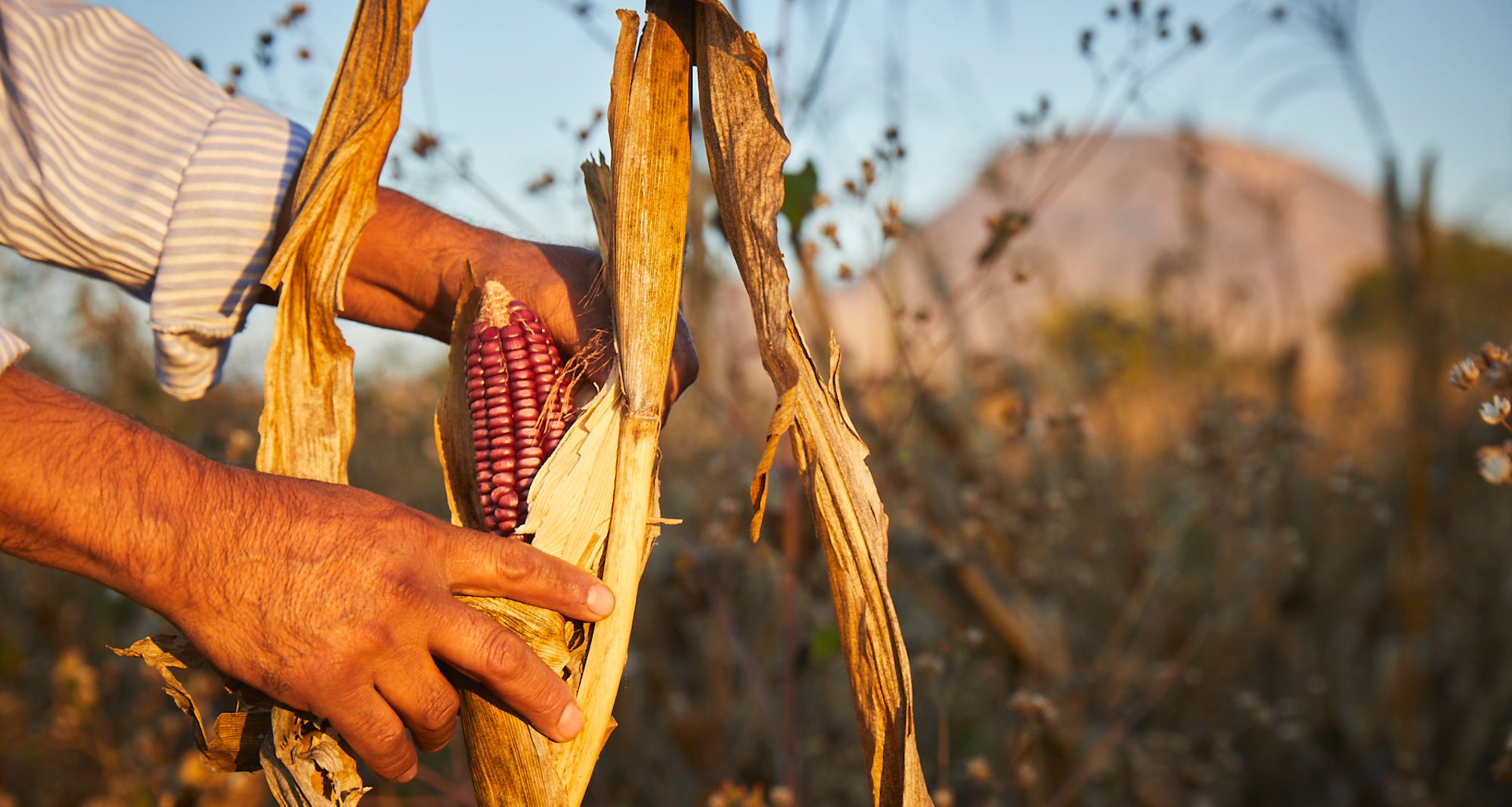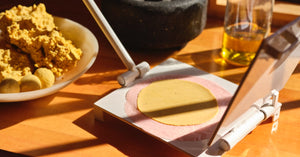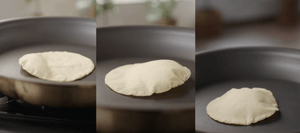A Comprehensive Guide to Heirloom Corn
A Comprehensive Guide to Heirloom Corn

June 1, 2021
If you're looking to dive into the world of heirloom corn, you've come to the right place. Read on to discover some of the most commonly asked questions about this ingredient, where it comes from, and what makes it so special.
What does heirloom mean?
An heirloom is something of value that has been passed down across multiple generations. In this case, heirloom corn comes from farmer-preserved seeds that have been hand selected for the best flavor and maintained for hundreds (even thousands) of years. Each generation does its own part to further perfect the corn’s flavor and quality before it’s passed on to the next generation.
Heirloom corn is completely different from the hybrid corn that makes up 98% of what is grown in the US (including virtually all organic corn); it is 100% farmer owned and exists outside of the large-scale value chains that we associate with genetically-modified corn, cattle feed and ethanol. Think of it as expressly culinary, not commodity.
How is heirloom corn grown?
All of Masienda's heirloom corn varieties are planted by hand, rain fed (i.e., not irrigated) and open pollinated. This means that pollination happens via insects, birds, wind or other natural organisms. When planted, open-pollinated seeds can be expected to progress through the plant’s natural life cycle. Heirloom seeds from each crop are saved by individual farmers to re-plant the following season - no genetic modification or hybridization involved in the process.
Why is it better to use or buy heirloom corn over other corn?
In more cases than not, purchasing heirloom corn is better for farmers and the environment. Our goal is to help protect and value the intellectual property of those farmers who have preserved and improved their corn through natural selection over hundreds of years.
Additionally, environmentally sustainable practices are employed wherever and whenever possible. We do not source any materials that are treated with pesticides and we maintain organic post-harvest handling practices.
One of our primary goals has always been to build a resilient supply chain that honors farmers independence. Our role is not to dictate what is grown; rather, our goal is to open up market opportunities for farmers who would otherwise lack fair options for their available surpluses.
When you purchase Masienda products, you are investing in individual communities. For us, impact goes beyond paying a premium price to farmers. We also invest in the local communities themselves by hiring and training teams to lead operations. Unlike commodities such as coffee or cacao, there is little to no infrastructure to speak of in Mexican heirloom corn. This means that each and every aggregation center, testing kit and data set has been created or organized from scratch, while simultaneously developing a new market at the other end of the value chain. Our goal is to be a consistent local presence for those with surplus materials to sell, year after year.
Is Masienda heirloom corn genetically modified?
Not one bit. For starters, it is worth noting that it is technically illegal to grow genetically-modified corn in Mexico. (ALL of Masienda’s corn, including our heirloom, is sourced from smallholder farming communities throughout Mexico.)
Corn--or any other plant, for that matter--becomes genetically modified through the introduction of additional genetics that do not pertain to corn itself (e.g., glyphosate-resistant properties that facilitate the use of herbicides in cultivation). This work is engineered in labs and applied to hybrid varieties of corn as a means of achieving consistent crops, year over year.
By contrast, Masienda farmers manually select the best seed samples from each harvest to replant the following year. And, unlike conventional treatment of non-GMO grains across the world, no pesticides or fumigants are used at any point in Masienda’s post-harvest handling.
What are the five common types of corn?
Flour Corn
Because it is composed primarily of soft starch, flour corn is able to be ground into a very fine cornmeal. This type of corn can range in heights anywhere from 2’ to 10’ and grows best in areas with drier climates. Flour corn ears are long and thin, and because they can be harvested in their “milk” stage (when the corn has not been dried and still retains most of its moisture). Ears of flour corn are commonly enjoyed steamed, boiled or roasted. At its milk stage, flour corn is sweeter than flint corn (described below), but not as sweet as the typical sweet corn variety you’ve likely tried. That said, flour corn is most often harvested when fully dry (ripe) and ground into cornmeal.
Unique characteristics: soft texture
Common uses: (flour) breads, tamales, tortillas, pinole; (dried kernels) corn nuts, pozole
Dent Corn
The dent that forms at the top of a corn kernel as it dries is what gives this type of corn its name. This happens because of the way that the starches are configured in each of these kernels. The harder starch is near the edges and the softer starch is in the middle, so it gently collapses inward (and forms the dent) as it dries.
Because ears of dent corn tend to be weighty and large, it only follows that their stalks are tall and sturdy enough to support that heft. Their height and individuated stalks make these varieties ideal for commercial harvesting equipment, so as you might imagine, dent (or field) corn constitutes the majority of commercially-raised corn in the world, and the majority of its varieties are GMOs or hybrids.
Unique characteristics: high starch content
Common uses: livestock feed, high-fructose corn syrup, plastics, ethanol, cornmeal, hominy, masa, elotes
Flint Corn
This is another type of corn whose name derived from its kernel characteristics. A flint corn kernel’s outer layer is very hard - like flint - in order to protect the contrastingly soft endosperm inside. The ears themselves are long and slender and the plants are often quite tall.
Unique characteristics: very hard kernel, stores exceptionally well
Common uses: (nixtamal) masa, hominy; (dried and ground) cornmeal; (kernel) corn nuts, popcorn; (dried) decorative ears
Popping Corn: Popping corn varieties are structurally very similar to flint corn, but smaller, both in ear and kernel size. When the kernels of popping corn are heated, the moisture trapped within the kernel transforms to steam and literally explodes the kernel inside out, creating that delightfully fluffy food we know as popcorn. Popping corn varieties are also friendly for the home gardener because the plants do not take up much space and the kernels don’t require much processing (just heat) to transform into an edible treat.
Unique characteristics: high starch content, wide range of single and multi-colored varieties
Common uses: popcorn!
Sweet Corn aka Golden Bantam
Varieties of sweet corn are best enjoyed when picked early, or when the kernels are still in their “milk” phase and have not ripened and dried. These varieties, one of the most popular of which is Golden Bantam, actually originated from the genetic mutations of flint and flour corns that prevented the conversion of sugars to starch. The result? A much sweeter taste.
Unique characteristics: sweet flavor
Common uses: “corn on the cob" and any culinary use that calls for fresh kernels
Where can I buy heirloom corn?
All of the corn that we source from smallholder farmers across Mexico are heirloom varieties. Take a look at the delicious
heirloom white, yellow, blue and red corn varieties that we currently have available for purchase online.



All Comments
excelente, siempre he sido partidario delasiembra de maiz criollo, de hecho conservo semillas de maiz criolllo, y en ocasiones practico la seleccion masal para mejorarlos de acuerdo a los requerimientos
Hi Ameer! Thank you so much for your kind words and support! We’re so glad our mission resonates with you. We’re excited to have you as a customer and appreciate you spreading the word.
Wow! I’m very impressed & so happy to know Masienda are producing REAL CORN without chemicals/pesticides/herbicides. I’m NOT a fan of Monsanto & all the others who have been destroying the planet with chemicals. It is time for EVERYONE to start growing healthy foods like our ancestors have been eaten during their lifetime, REAL RAW, DENSE FOODS that keeps us healthy. I loved Masienda vision & commitment to provide GMO’s free corn. I will be a customer to purchase. I will be sharing the fantastic news with friends & families to show their support to TRUE FARMERS! Thank you Masienda. Keep producing organic foods. The world needs to know these are the healthiest foods ever to be produced & everyone MUST show their love to all the amazing farmers who are doing the right thing!
i’m conducting my thesis proposal on heirloom maybe this could help me finish my bachelor’s degree